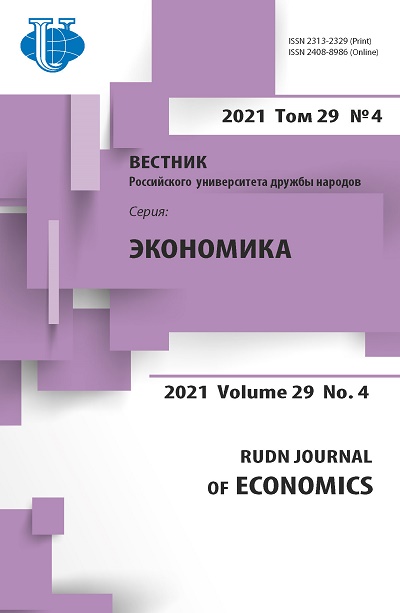Current trends in Japan’s economic cooperation with the SCO member states
- Authors: Korneev K.A.1
-
Affiliations:
- Institute of Far Eastern Studies of the Russian Academy of Sciences
- Issue: Vol 29, No 4 (2021)
- Pages: 750-762
- Section: INTERNATIONAL TRADE IN THE CONDITIONS OF GLOBALIZATION
- URL: https://journals.rudn.ru/economics/article/view/30105
- DOI: https://doi.org/10.22363/2313-2329-2021-29-4-750-762
Cite item
Full Text
Abstract
The paper considers the Japanese economic policy towards the SCO member states, which is built on the basis of Japan’s long-term interests in the Asian region. The Shanghai Cooperation Organization is quite diverse: some countries (India, China) are moving in the high-speed segment of the world economy and have annual GDP growth (excluding the fall in 2020 caused by the pandemic) at the level of 5% or more, while others (for example, Russia) are in the low-speed segment. This forms a different content of Japan’s foreign economic policy in relation to the individual SCO states, but there are also a number of general trends due to the current structure of Japanese exports/imports. For more than a decade, Japan has been facing a difficult task of overcoming prolonged economic stagnation not only through internal reforms, but also through expanding the borders of its foreign trade activities, and the SCO countries with their capacious domestic markets experiencing a shortage of high-tech products are among the priority areas for Japanese exports. Therefore, the urgent content of Japanese foreign economic policy in the SCO area is of considerable scientific interest.
About the authors
Konstantin A. Korneev
Institute of Far Eastern Studies of the Russian Academy of Sciences
Author for correspondence.
Email: korneev@ifes-ras.ru
ORCID iD: 0000-0003-3930-6309
PhD in History, senior researcher, Centre for Japanese Studies
32 Nakhimovskii Prospekt, Moscow, 117997, Russian FederationReferences
- Armstrong, S., & Drysdale, P. (2014, October). Japan’s foreign economic policy strategies and economic performance. Columbia University in the City of New York Working Paper Series, (164), 2–30.
- Asian Development Bank. (2020). Regional Comprehensive Economic Partnership: Overview and economic impact. ADB Briefs No 164. Manila.
- Kashin, V.B. (2019). The SCO Role in the development of trade economic relations between EAEU and Asian countries in modern times. In Yu.V Morozov (Ed.), Prospects for Multilateral Cooperation between the SCO and International Structures in the Interests of the Organization’s Strategy Development (pp. 108–117). Moscow, IFES RAS. (In Russ.)
- Lynch, B., Chenyang, L., Lee, S., Rastam Mohd Isa, T.S., Morrison, Ch.E., Perez-Restrepo, C., & Thanh, V.T. (2020). Report of the PECC Task Force on APEC Beyond 2020. Singapore: Pacific Economic Cooperation Council Publications.
- Makhmutov, A. (2014). The SCO and BRICS summits in Bashkortostan: Challenges to discuss. Economics and Management, (1), 4–15. (In Russ.) Retrieved June 15, 2021, from http://inefb.ru/econuprav-ufa/115-econuprav/1458-ekonomika-i-upravlenie-nauchno-prakticheskij-zhurnal-1-2014
- Murashkin, N. (2019). Japan and Central Asia. Do diplomacy and business go hand-in-hand? Paris: IFRI Centre for Asian Studies.
- Petrovsky, V.E. (2019). Challenges and prospects of the financial and economic cooperation within the SCO. In Yu.V Morozov (Ed.), Prospects for Multilateral Cooperation between the SCO and International Structures in the Interests of the Organization’s Strategy Development (pp. 118–130). Moscow, IFES RAS. (In Russ.)
- Talalova L., Hang, C.T., Morozova, A. (2021). Consequences appraisal of India’s opting out of the Regional Comprehensive Economic Partnership Agreement. Vestnik Universiteta, (6), 129–134. (In Russ.)















